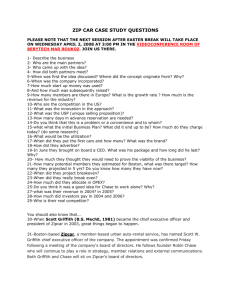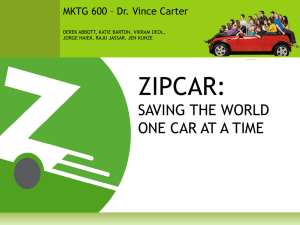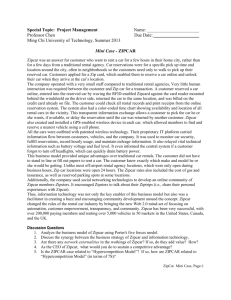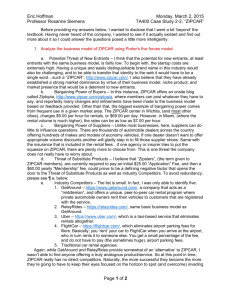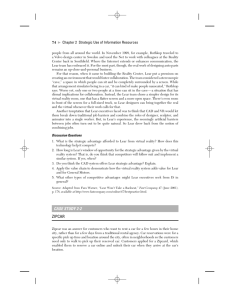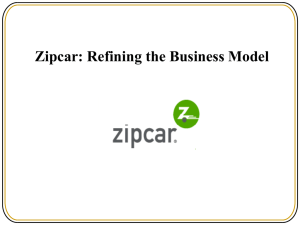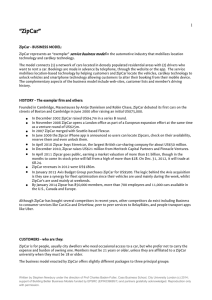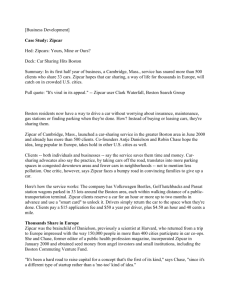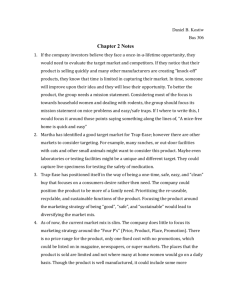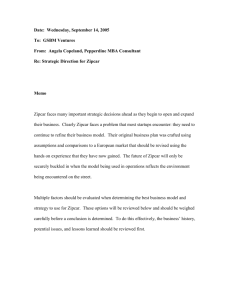Innovating in a Competitive Market: How Zipcar Carved a Niche
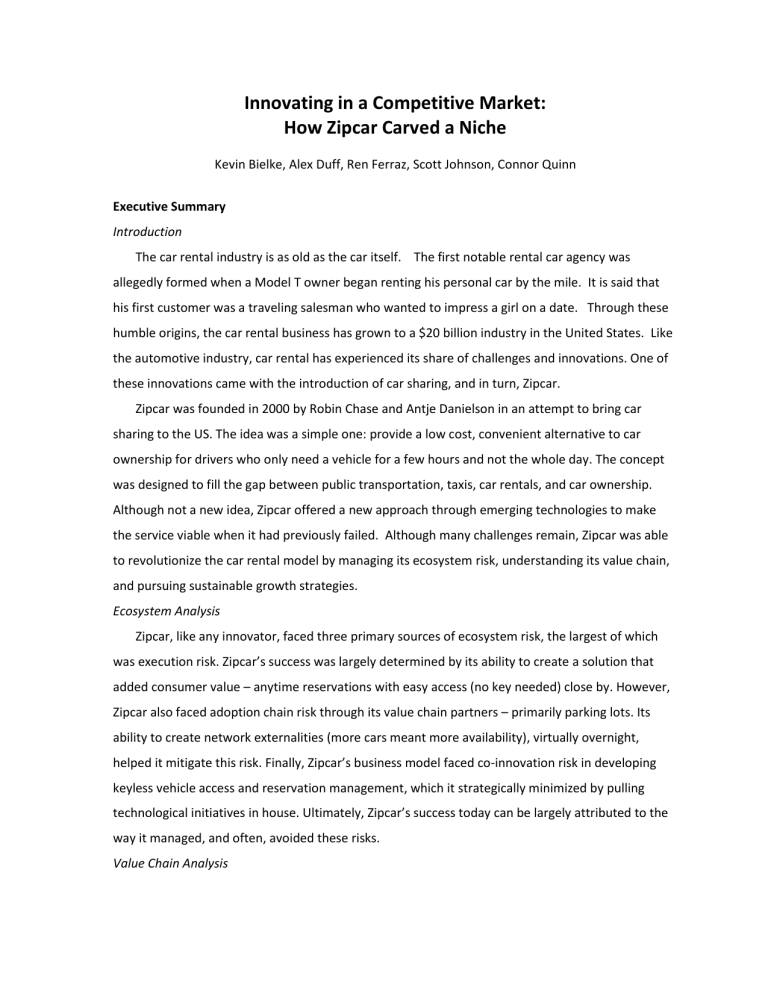
Innovating in a Competitive Market:
How Zipcar Carved a Niche
Kevin Bielke, Alex Duff, Ren Ferraz, Scott Johnson, Connor Quinn
Executive Summary
Introduction
The car rental industry is as old as the car itself. The first notable rental car agency was allegedly formed when a Model T owner began renting his personal car by the mile. It is said that his first customer was a traveling salesman who wanted to impress a girl on a date. Through these humble origins, the car rental business has grown to a $20 billion industry in the United States. Like the automotive industry, car rental has experienced its share of challenges and innovations. One of these innovations came with the introduction of car sharing, and in turn, Zipcar.
Zipcar was founded in 2000 by Robin Chase and Antje Danielson in an attempt to bring car sharing to the US. The idea was a simple one: provide a low cost, convenient alternative to car ownership for drivers who only need a vehicle for a few hours and not the whole day. The concept was designed to fill the gap between public transportation, taxis, car rentals, and car ownership.
Although not a new idea, Zipcar offered a new approach through emerging technologies to make the service viable when it had previously failed. Although many challenges remain, Zipcar was able to revolutionize the car rental model by managing its ecosystem risk, understanding its value chain, and pursuing sustainable growth strategies.
Ecosystem Analysis
Zipcar, like any innovator, faced three primary sources of ecosystem risk, the largest of which was execution risk. Zipcar’s success was largely determined by its ability to create a solution that added consumer value – anytime reservations with easy access (no key needed) close by. However,
Zipcar also faced adoption chain risk through its value chain partners – primarily parking lots. Its ability to create network externalities (more cars meant more availability), virtually overnight, helped it mitigate this risk. Finally, Zipcar’s business model faced co-innovation risk in developing keyless vehicle access and reservation management, which it strategically minimized by pulling technological initiatives in house. Ultimately, Zipcar’s success today can be largely attributed to the way it managed, and often, avoided these risks.
Value Chain Analysis
We found that Zipcar enhances the commuting experience for urban dwellers in three distinct ways. First, it makes car sharing comparable to car ownership by shifting wait time upward in the commuting process. Second, it ensures its members have on-demand access to a car – the core of its value proposition – by making reservations a required step in the process. Third, it allows the consumer to perform several steps in the process only once and most of the steps remotely, substantially increasing convenience. Furthermore, we concluded that the Zipcar business model is sustainable for two of the very reasons it is appealing to consumers: obligatory reservations and the ability to perform steps remotely. These two points of differentiation are achieved simultaneously through Zipcar’s web-based platform and in-car technology.
Growth Strategy
In its 11 year history, Zipcar has competed fiercely to be the dominant market player. It’s most important resources, parking spaces, are in inherent short supply, increasing expenses and making sustainable growth very difficult. Conversely, Zipcar has managed to develop strong relationships with auto manufacturers, structuring win-win partnerships that have secured auto availability and marketing promotions for years to come. However, in order to continue to scale its business and to expand to new geographies, Zipcar has pursued both organic and acquisitive growth strategies.
Additionally, Zipcar underwent management changes that have subsequently brought changes in its business model. Through its IPO in 2011, Zipcar has achieved success unlike any prior car-sharing start-up and has demonstrated that the service model and technology integration employed is successful.
